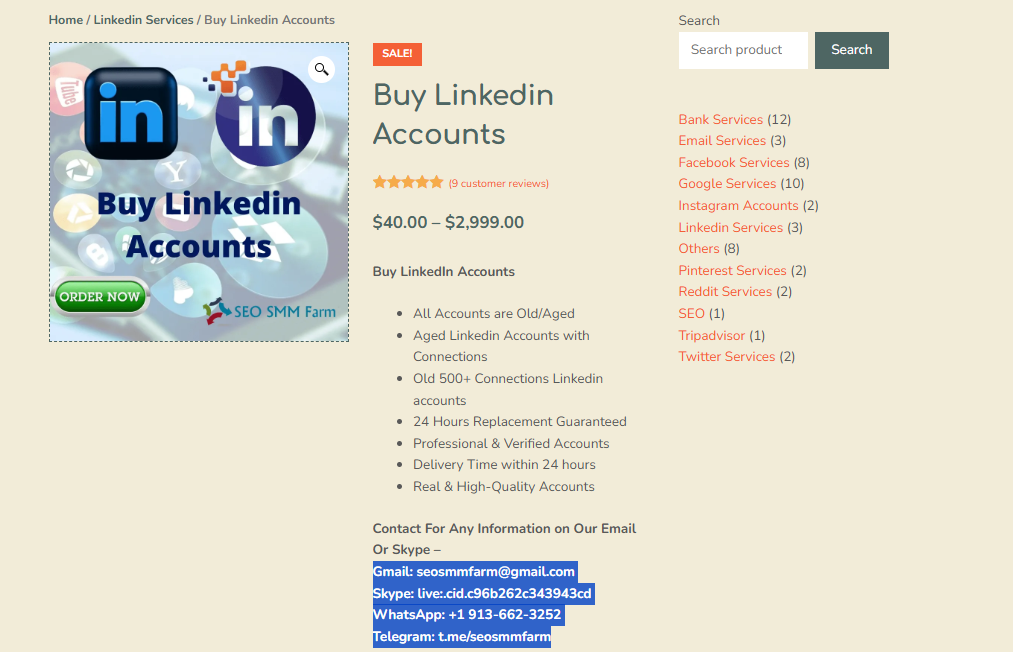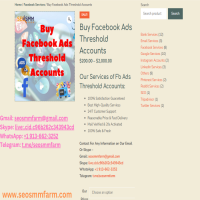A Beginner’s Guide to Social Media Advertising

Strong 8k brings an ultra-HD IPTV experience to your living room and your pocket.
A Beginner’s Guide to Social Media Advertising
Social media advertising has become a cornerstone of digital marketing, helping businesses reach massive audiences with precision. Whether you're a small business owner, a marketer, or an entrepreneur, understanding the fundamentals of social media ads is essential for success in the modern digital landscape. In this beginner's guide, we’ll break down everything you need to know about social media advertising, from platform selection to ad creation and budgeting.
What is Social Media Advertising?
Social media advertising refers to the process of using paid advertisements to promote a brand, product, or service on platforms like Facebook, Instagram, Twitter, LinkedIn, Pinterest, and TikTok. These ads can be in the form of text, images, videos, carousel posts, or even stories. The goal is to reach a broader audience, increase engagement, drive traffic to your website, or boost sales.
Why Use Social Media Advertising?
With billions of active users across social media platforms, advertising on these sites allows businesses to reach a vast audience while also targeting specific demographics. Unlike traditional advertising methods, social media ads provide detailed targeting options and real-time analytics, giving you the power to optimize your campaigns for maximum effectiveness.
Some of the key benefits include:
Targeted reach: Choose who sees your ads based on age, location, interests, behavior, and more.
Cost-effective: Social media advertising can be very affordable, especially when compared to traditional media channels.
Increased engagement: Ads encourage users to interact with your content, increasing visibility and potential conversions.
Measurable results: You can track performance metrics such as clicks, impressions, and conversions, making it easy to measure ROI.
Choosing the Right Social Media Platform
The first step in launching a social media advertising campaign is choosing the right platform. Each social network has its strengths and caters to different types of audiences. Here’s a quick breakdown of the most popular platforms for advertising:
Facebook & Instagram: These platforms are ideal for reaching a broad audience, and their advanced targeting options allow advertisers to refine their campaigns based on factors like interests, behaviors, and demographics. Instagram is particularly effective for visually appealing products, while Facebook offers a mix of text, images, and videos.
Twitter: Known for its fast-paced environment, Twitter is great for running short-term campaigns, such as promotions, events, or news announcements. Ads here tend to be more conversational and time-sensitive.
LinkedIn: The go-to platform for B2B marketing. LinkedIn advertising is perfect for professional services, networking, and recruiting efforts, targeting users based on their job titles, company sizes, industries, and skills.
TikTok: A newer platform with an audience primarily composed of Gen Z, TikTok is excellent for brands looking to create viral, engaging content. The platform’s unique video format allows for creative, fun, and immersive advertising.
Pinterest: Best suited for industries like fashion, food, and home decor, Pinterest ads are highly visual and are particularly effective for driving traffic to websites and online stores.
Types of Social Media Ads
Once you’ve chosen a platform, it’s time to decide which type of ad to run. There are several formats to choose from:
Image Ads: Simple yet effective, image ads are great for showcasing products or services with a single eye-catching image.
Video Ads: Video ads are perfect for telling a story, showcasing a product in action, or providing tutorials. They tend to capture attention and generate higher engagement.
Carousel Ads: These ads let users swipe through multiple images or videos in one post. They’re ideal for showcasing several products or highlighting different features of a single item.
Story Ads: These full-screen vertical ads appear between users’ stories and are perfect for engaging users in a less intrusive way.
Sponsored Posts: These are regular posts that you pay to boost so they reach a larger audience. They look like native content but are tagged as "sponsored."
Creating Your First Social Media Ad Campaign
Creating an effective social media ad campaign involves several steps:
Set Clear Objectives: Define what you want to achieve with your ads. Do you want to increase website traffic, grow brand awareness, or drive sales? Your goal will shape your entire campaign.
Identify Your Target Audience: Social media platforms offer advanced targeting options to help you reach the people most likely to be interested in your product or service. Specify factors like location, age, gender, interests, behaviors, and more.
Craft Compelling Ad Copy and Visuals: Your ad should grab attention immediately. Use high-quality images or videos and concise, persuasive text. Focus on the benefits of your product or service and include a clear call to action (CTA).
Set Your Budget: Social media advertising can be as budget-friendly or as expensive as you want it to be. Start with a small daily budget, and scale up as you see results. Platforms like Facebook and Instagram use a bidding system where you set the maximum amount you're willing to pay per click or impression.
Monitor and Optimize: Once your campaign is live, track its performance using the platform’s analytics tools. Metrics like clicks, impressions, and conversion rates will tell you whether your ad is effective. If something isn’t working, adjust your targeting, ad creative, or budget.
Best Practices for Social Media Advertising
To ensure the success of your social media ad campaigns, follow these best practices:
Use eye-catching visuals: Visual content grabs attention faster than text. Invest in high-quality images and videos that are relevant to your brand.
Keep your copy simple: Short and clear text works best. Your message should be easy to understand and deliver value quickly.
Test multiple ad variations: Run A/B tests on different visuals, headlines, and CTAs to see which performs best.
Optimize for mobile: Most social media users access platforms via their phones, so make sure your ads are mobile-friendly.
Engage with comments: If users comment on your ads, engage with them to build rapport and trust.
Conclusion
Social media advertising is an essential tool for any business looking to increase visibility, drive engagement, and boost conversions. By selecting the right platform, crafting compelling ads, and continuously optimizing your campaigns, you can effectively tap into the power of social media to grow your brand.
Start with small, targeted campaigns, analyze the results, and refine your approach to get the most out of your advertising budget. As you gain experience, social media ads will become a powerful tool in your marketing toolkit.
Note: IndiBlogHub features both user-submitted and editorial content. We do not verify third-party contributions. Read our Disclaimer and Privacy Policyfor details.


